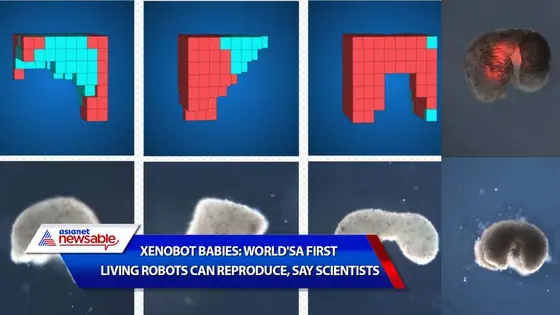
Xenobot babies: World's first living robots can reproduce, say scientists
Scientists who created xenobots, the world's first living robots, say the life forms can now reproduce -- and in a way not seen in plants and animals.
Scientists who created xenobots, the world's first living robots, say the life forms can now reproduce -- and in a way not seen in plants and animals. While this may mark a groundbreaking scientific feat, we expect humans to absolutely freak out at this news. The first living robots, known as xenobots are able to reproduce in a fashion not seen in plants and animals.

The tiny organisms were originally unveiled in 2020. The robots were assembled from heart and skin stem cells belonging to the African clawed frog. They can move independently for about a week before running out of energy, are self-healing and break down naturally. Xenobots are roughly 0.4 inches wide and were first unveiled in 2020 after a series of experiments revealed their capabilities - including the ability to work in groups and to heal themselves.
Also read:Ozone hole now 8 times the size of India: Scientists
The scientists from the University of Vermont, Tufts University and Harvard University's Wyss Institute for Biologically Inspired Engineering published research on Monday saying they discovered a new type of biological reproduction different from any other known plant or animal species, according to a press release published by the Wyss Institute.
Michael Levin, a professor of biology and director of the Allen Discovery Center at Tufts University, told CNN, “Frogs have a way of reproducing that they normally use but when you... liberate (the cells) from the rest of the embryo and you give them a chance to figure out how to be in a new environment, not only do they figure out a new way to move, but they also figure out apparently a new way to reproduce.”
“These things move around in the dish and make copies of themselves,” Josh Bongard of the University of Vermont, the lead author of the research, told The Guardian.
“These are very small, biodegradable and biocompatible machines, and they’re perfectly happy in freshwater,” he said, adding that near-term applications could include collecting microplastics from waterways.
Also watch: New cancer treatment can kill tumours cells in head and neck cancer patients: Study
Meanwhile, speaking to CNN, Bongard highlighted that people think robots are metal and ceramic “but it's not so much what a robot is made from but what it does, which is acting on its own on behalf of people”.
The study was published in the scientific journal PNAS on Monday.